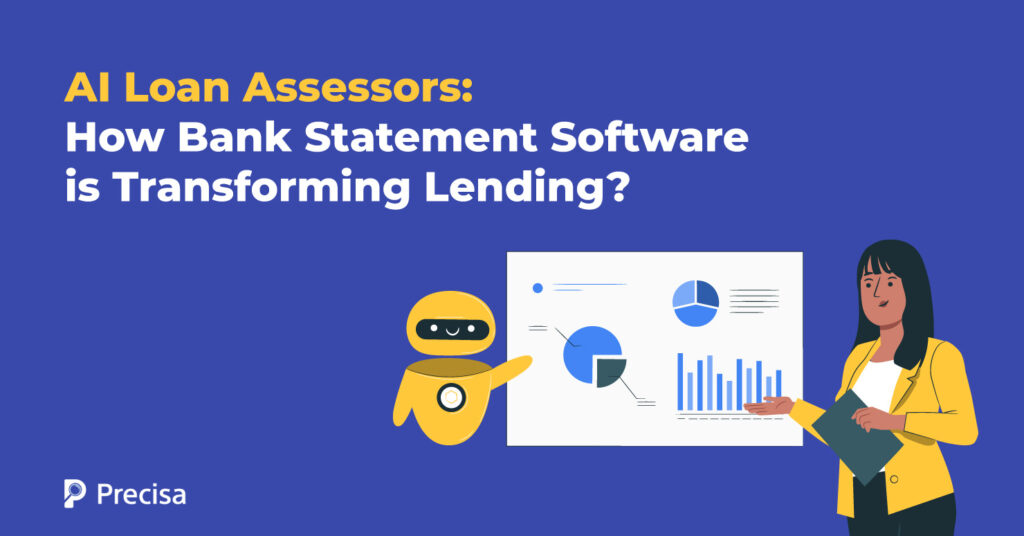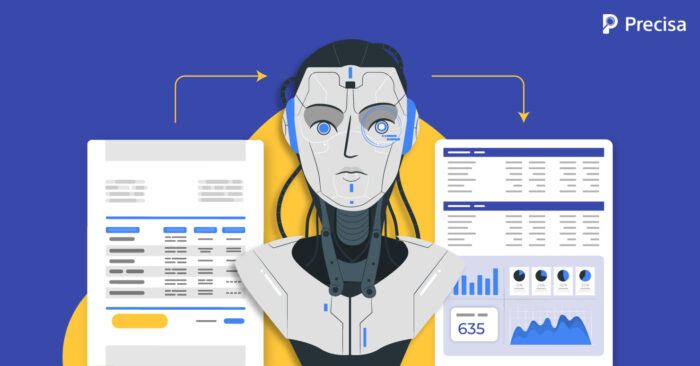AI Loan Assessors: How Bank Statement Software is Transforming Lending?

Imagine applying for a loan and receiving approval within minutes—all thanks to cutting-edge AI tools. No more waiting for days as your paperwork is shuffled between departments. This is the future of lending, powered by AI-powered bank statement software or loan assessors.
These tools are helping lenders improve the quality of their decisions by providing faster, more accurate, and data-driven insights to streamline the loan approval process.
As per a report, India’s digital lending market is expected to reach $515 billion by 2030. One of the critical enablers of growth in this segment is the adoption of AI and ML by digital lending platforms.
Now, let us explore how AI-powered loan assessors are transforming the lending space.
What is Bank Statement Software?
For lenders, a bank statement software or bank statement analyser reviews and interprets borrowers’ financial transactions to evaluate their creditworthiness. It evaluates the loan applicant’s inflows, outflows, and spending patterns to assess their cash flow stability and repayment capacity.
This analysis is critical for lenders as it assists them in making more informed, data-driven decisions based on real-time financial information.
Going beyond evaluation, the software automates tasks like classifying transactions, spotting trends, delivering reports, and identifying anomalies or inconsistencies in a given statement.
The use of bank statement software is also driven by the need to comply with regulatory guidelines, such as KYC (Know Your Customer) Guidelines, 2022 Digital Lending Guidelines, Non-Performing Assets (NPA) Management Guidelines, etc.
A wide range of lenders in India, including banks, NBFCs, fintech companies, and digital lending platforms, are increasingly adopting the tool. This trend is driven by the need for efficient, accurate, and scalable credit assessment processes.
The tool also enables lenders to provide customised, cost-effective loan products to Micro, Small, and Medium Enterprises (MSMEs) by leveraging in-depth data insights. This drives more financial inclusion—which is a major enabler of economic growth.
How Does AI Enhance Bank Statement Software?

Traditional data extraction and analysis methods are notoriously inefficient. They’re often manual, leading to slow processing times, costly labour expenditures, and a higher risk of human error.
In this scenario, AI is helping lenders with an automated scan of hundreds of data points in seconds and identifying patterns and anomalies that manual analysis may miss.
Leveraging AI, bank statement software can assist lenders in improving their portfolio quality. Here’s how it can help:
1. Automated Data Extraction
AI-driven bank statement software automatically scans and extracts data from bank statements. Optical Character Recognition (OCR) and Natural Language Processing (NLP) help extract data accurately and quickly, unlike labour-intensive manual processing.
The software helps convert complex financial documents into structured information that lenders can analyse quickly. Lenders access reports with all of a borrower’s data, such as account numbers, types of accounts, branches, and bank transaction data for verification and analysis.
Automation of data extraction results in:
- Speed and Efficiency: AI-powered statement software rapidly scans and extracts data, significantly reducing processing time compared to manual methods.
- Enhanced Accuracy: OCR and NLP ensure high precision in data extraction.
- Structured Information: The software converts complex financial documents into easily analysable structured data, allowing for quick access to essential borrower information.
- Comprehensive Reporting: Lenders can generate detailed reports that include account numbers, types of accounts, branches, and transaction histories for thorough verification.
- Cost Savings: Automating data extraction reduces the need for manual labour, leading to lower operational costs and improved resource allocation.
2. Improved Risk Assessment
Legacy credit assessment relies on credit scores, which poses two challenges: first, it does not present a comprehensive picture of a borrower’s financial health, and second, it excludes a large segment of the population who do not have any credit history.
The AI-driven bank statement analyser provides a holistic view of borrowers’ financial situation, empowering lenders to mitigate risk effectively in the following ways:
- Financial Health Assessment: The analyser evaluates key metrics such as income stability, cash flow, and debt-to-income ratios to assess a borrower’s overall financial health.
- Anomaly Detection: AI identifies suspicious patterns and inconsistencies in transaction data, alerting lenders to potential fraud or risky behaviour.
- Account Aggregation: By consolidating data from multiple accounts, lenders gain a comprehensive view of a borrower’s financial status, enhancing decision-making capabilities.
3. Proactive Fraud Detection
A Reserve Bank of India report revealed loan-related frauds amounted to ₹18,746 crore in the first half of FY 2023. Fraudulent loan applications pose a crucial threat to lenders by eating into their profits and causing regulatory concerns.
Bank statement software leveraging AI is better equipped to detect fraud by:
- Recognising Suspicious Patterns: The bank statement software flags unusual spending behaviour that may indicate fraud.
- Document Tampering Detection: Advanced algorithms identify alterations in bank statements using OCR technology.
- Identifying Inconsistencies in Data: AI checks transaction data against historical norms to find discrepancies.
- Reducing Scams by Flagging Altered Statements: The system highlights modified documents by comparing them to original records.
4. Promotes Customer-Centric Approach
AI-based assessment tools benefit customers and allow lenders to have a more customer-centric approach. They benefit customers in the following ways:
- Personalised Experiences: AI can analyse customer data to tailor assessments and financial products to individual needs, enhancing the overall customer experience.
- Faster Decision-Making: Automated assessments streamline the application process, allowing lenders to provide quicker responses and approvals.
- Reduced Bias: AI tools help minimise human biases in lending decisions by relying on data-driven insights, promoting fairness and equity in the assessment process.
- Suggest Suitable Products: With advanced algorithms, AI can improve the accuracy of assessments, leading to better matching of customers with suitable financial products.
Final Note
The AI-powered bank statement software offers lenders valuable assistance in their lending process. These tools help lenders improve profitability, reduce defaults and promote customer satisfaction and loyalty.
Precisa’s Bank Statement Analysis tool uses a combination of AI, ML, OCR and cloud computing to drive the analysis process from start to finish. It offers lenders the following benefits:
- Harnesses cutting-edge AI algorithms and data analytics to help lenders streamline their operations.
- Helps identify potential fraud and improve the accuracy of credit decisions.
- Improves productivity by 8X and reduces processing time by 5X.
Sign up to know more!



